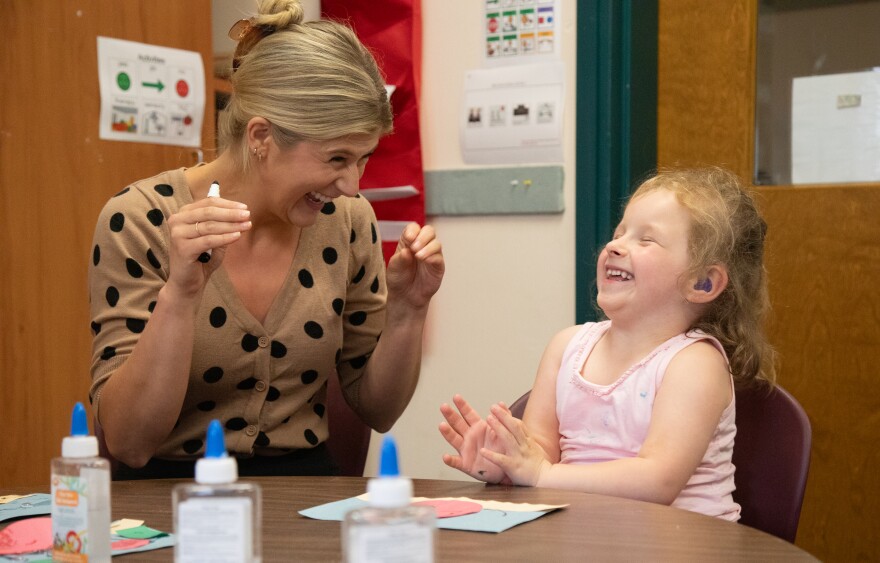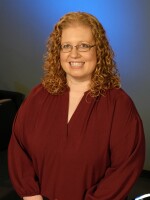University of Scranton graduate student Brady Rose asked Jack Spencer a question: “Do you know the sign for elephant?”
The 4-year-old, a student at the Scranton School for Deaf and Hard-of-Hearing Children, moved his hand forward, imitating the trunk of the animal.
“Very nice,” Rose said.
The University of Scranton students are spending eight weeks this summer at the school for deaf students located in Lackawanna County, running the Summer Academy for Speech and Language Enrichment. The university students, part of the first cohort for the new speech-language pathology master’s program, say the experience is all about communication.

Students at the deaf school have varying levels of hearing ability. Some students are verbal, others use American Sign Language and some use an Augmentative and Alternative Communication (AAC) device. Many times, the students use a combination of those.
“It’s definitely very interesting to communicate with everybody,” said Destiny Carpitella, a university student from Brooklyn. “With all of the communication modes, we have to understand what our students want and need at every single moment.”
Prior to starting the program this summer, the university students participated in an eight-week American Sign Language bootcamp, hosted by a School for the Deaf teacher.
After a full year of coursework, this serves as the first clinical experience for students in the new graduate program. The students will also have clinical experiences during the fall and spring semesters.
“We hope that they gain confidence to be able to work in the field of speech-language pathology, learning opportunities on how to collaborate and consult,” said Tara Carito, the university’s clinical education coordinator for the program.
At the South Abington Township school this week, the children participated in individual sessions and small language groups. They worked on sign language and verbal skills and took time for dancing and crafts.
The university students are paired with the same children from the deaf school throughout the day.
“You're following them throughout the day and seeing how they work with other children,” said university student Gia Maayan. “I’m seeing what the child needs and then making a combo that works best for them… it's very, very cool.”










